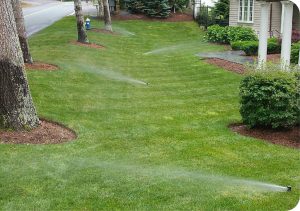Pomsky is playful, smart, energetic dogs with a lot of love to give. This hybrid breed has a unique personality and looks that can vary depending on which parent’s genes are more dominant.

Responsible Pomsky breeders use DNA testing in an effort to avoid passing along health conditions that both Siberian Husky and Pomeranian breeds are predisposed to. Just like any other dog, Pomskies need proper care and attention to thrive.
A Pomsky is a designer dog that combines the best traits of both parent breeds. The result is a playful and affectionate breed that thrives as a part of the family. As such, they can be a great companion for children of all ages and can get along well with other pets in the home as long as their social needs are met.
Like any dog, a Pomsky will need regular exercise and mental stimulation to stay happy and healthy. Keeping them active will help prevent boredom and destructive behaviors that can develop into more serious issues. This can be done through interactive games, stimulating chew toys, and other fun activities that challenge their intelligence. In addition, a balanced diet, routine grooming, and preventive healthcare will also contribute to their overall health and well-being.
When choosing a Pomsky, it’s important to select a responsible breeder who prioritizes the health of the animals they produce. Look for a breeder who conducts thorough health testing and has a history of producing healthy puppies. They should also be knowledgeable about Pomsky generation, understanding how the F1, F1b, and F2 generation can affect their size variations and coat colors.
Since Pomskies are relatively new, expect to pay a premium for this designer breed. This upfront cost is often in addition to the initial costs of supplies, vaccinations, and microchipping. While it may be tempting to choose a breeder with a lower adoption fee, an overly-cheap price tag is often a red flag that indicates irresponsible breeding practices.
As with any dog, a Pomsky will require a high-quality dog food. Talk with your veterinarian to determine the right type of food for your pet and gradually introduce it to their diet. It’s best to avoid introducing too many changes at once, as this can lead to stomach upset and digestive problems.
Although not officially recognized as a mixed breed by the American Kennel Club, Pomskies have gained a lot of popularity. Like any breed, they have a unique set of characteristics that make them special. Embracing their lively personality and devotion can significantly enhance the quality of life for their owner, creating a truly special bond that lasts a lifetime.
Training
Like their parent breeds, Pomskies can be independent and stubborn and require training to curb their innate willfulness. They’re best suited to owners with a lot of patience, who are willing to train regularly and provide plenty of physical and mental stimulation. They may not be a good match for novice dog parents, families with small children or other pets or those who live in urban settings with limited outdoor space.
Positive reinforcement and a balanced approach to training are generally considered the best methods for working with pomskies. This includes a combination of praise and treats for positive behavior and corrections or timeouts for negative behavior. While there are many different dog training techniques to choose from, it’s important for pomsky owners to understand that their dogs must think of them as the pack leader in order to learn. If they don’t, they will be less likely to listen to what you say.
If you’re not sure how to train your pomsky, seek the help of a professional trainer who can teach you the basics of getting them to respond to you. Investing in this kind of professional training will pay off over time as your dog matures and learns what you expect of them.
Pomskies are generally healthy, but as with all dogs it’s important to take them for regular wellness checks at the veterinarian. This will help prevent health problems that can be costly down the road.
Allergies are common in pomskies, and some owners find that their pet suffers from food allergies, itching or other conditions. This is especially true in the winter months when they might be itchy from colder temperatures and need to scratch to keep warm.
To avoid these types of issues, be sure to provide a warm, comfortable environment for your pomsky. This may include keeping them inside during most of the day when it’s too cold outside and allowing them to use the bathroom inside a couple of times throughout the night. During the day, they’ll need to be engaged with daily walks or runs and lots of activities such as training sessions, puzzle toys, and food challenges.
Health
As they are a hybrid breed, Pomskies may have some health issues to contend with. Thankfully, these are usually less severe than what you would see in a purebred dog.
Because they are a cross between two different breeds, pomskies do not have a breed standard and it can be difficult to predict what they will look like as adults. They can resemble miniature huskies or wolves, depending on which parent they take after more. Even in the same litter, puppies may vary in appearance with some looking more husky-like and others appearing more Pomeranian in shape and coloring.
Due to their small size and their parents’ genetic predisposition to heart conditions, pomskies are at risk for a variety of heart problems. One such condition is called Hypertrophic Cardiomyopathy (HCM). It’s a hereditary disease that causes the walls of the heart to thicken, making them narrower than they should be and increasing the risk for heart failure.
They are also at risk for a number of eye issues, including juvenile cataracts, Corneal Dystrophy, and Progressive Retinal Atrophy. The latter is a progressive disease that ruins the light-sensitive inner lining of the eyes, causing them to gradually become blind.
Pomskies should be brushed about twice a week using an undercoat rake or slicker brush to keep their coat healthy. This will help to remove tangles, keep their skin clean, and remove any dirt that might have collected in the spaces between the dog’s pads. This is particularly important during the spring and fall when the breed sheds heavily.
In addition, pomskies are at risk of patellar luxation or “slipping knees.” This hereditary disease can cause the dog’s knees to slip out of place and is very painful.
Before you get a Pomsky, it is a good idea to ask the breeder to provide you with the name of the veterinarian who performed all of their puppy’s health tests and screenings. You can then contact that vet who will be able to walk you through the results and help you understand what symptoms to watch out for as the Pomsky grows up.
Care
While Pomskies can thrive in many environments, they do best with a routine that includes plenty of exercise and mental stimulation. They are intelligent, energetic dogs that respond well to positive reinforcement and training techniques. Like other dogs, they need proper grooming, dental hygiene, and of course, regular veterinary care. A proactive approach to care will help you prevent problems, reduce the cost of treatment, and ultimately keep your Pomsky happy and healthy for a long time.
Because the Pomsky is a hybrid dog combining two highly sought-after breeds, it can be quite expensive to own one. The price tag will depend on a number of factors including the reputation and experience of the breeder, the age of the dog, what’s included in the adoption package (like initial vaccines and microchip), and your location. Whether you decide to purchase a Pomsky or adopt from a shelter, be prepared to spend up to $5,000 for this designer dog.
As with all breeds, Pomskies are predisposed to certain health issues and diseases that can be managed through a well-formulated diet, regular veterinary visits, and early detection and intervention. The best way to help your pooch stay healthy is to work with a veterinarian who will be able to provide you with a recommended daily feeding guide tailored to your pet’s specific weight, body condition score, activity level, and health needs.
A high-quality, protein-rich dog food is an important component of a Pomsky’s diet. Look for a food with a balance of amino acids, vitamins, and minerals to support healthy skin and coat. It’s also essential that your pooch has access to fresh, clean water daily. Keep a bowl out at all times and change the water frequently to avoid dehydration.
Pomskies are active dogs that burn up a lot of energy during playtime, so it’s important to plan for their daily exercise needs. This can be easily done by taking your pup on daily walks or runs, setting aside time for training sessions, and incorporating brain-engaging games such as food puzzles.




